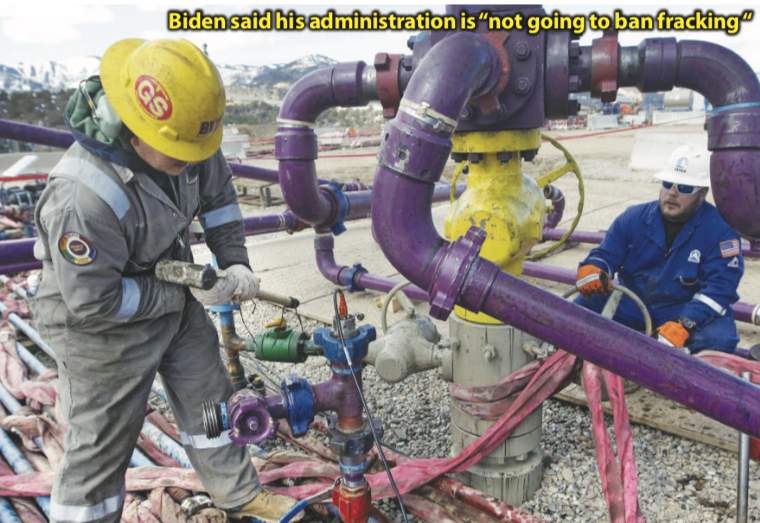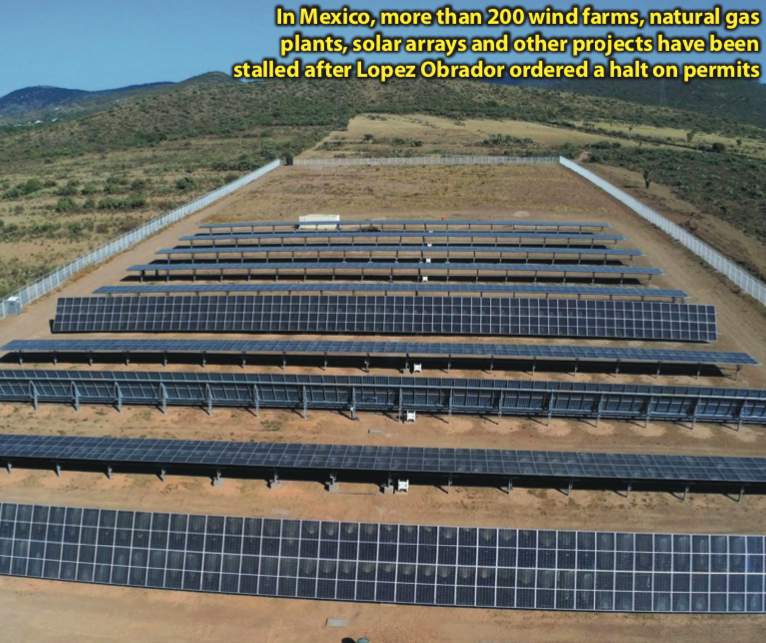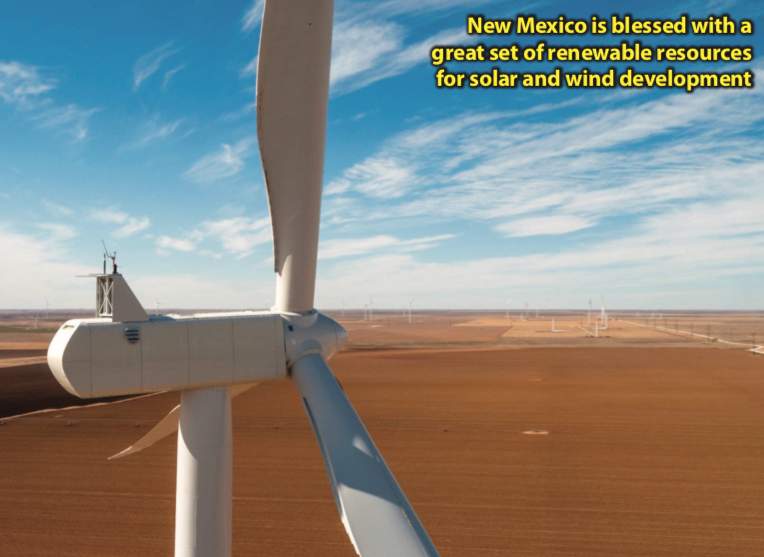Energy Policies Clash at the Border

By Nancy J. Gonzalez
The U.S.-Mexico border is poised to be an energy hub, but the conflicting views of both nations’ presidents are changing this panorama. Recently, President Joe Biden signed a moratorium on new oil and gas leasing on public lands despite opposition from the fossil fuel industry. This is the first step toward an outright ban on new drilling, one of President Biden’s campaign promises.
On the other hand, President Andres Manuel Lopez Obrador has threatened to overturn the energy reform that opened the energy market to private capital if he cannot find another way to rework the rules to help Mexico’s two big state energy firms: Pemex and CFE.
The panorama in both countries is very different. While President Biden aims to reduce fossil-fuels and increase renewables, President Lopez Obrador is against renewable energy in Mexico changing the rules for investors. Still, the U.S.-Mexico border region is being impacted by both agendas.
In the closing months of the Trump administration, energy companies stockpiled enough drilling permits for western public lands to keep pumping oil for years.
Companies submitted more than 3,000 drilling permit applications in the last quarter of 2020, according to data from the U.S. Bureau of Land Management. More than 60% of the permit applications filed over the past year were in New Mexico, where about a quarter of the state budget comes from oil and gas revenues.
The goal for companies was to lock in drilling rights on oil and gas leases on vast public lands where they make royalty payments on any resources extracted. Biden made it clear he wants to end new drilling on those same lands as part of his overhaul of how the U.S. gets energy, with the goal of making the nation carbon neutral by 2050.
During the signing ceremony, Biden said his administration is “not going to ban fracking — we’ll protect jobs and grow jobs, including through stronger standards like controls for methane leaks and union workers willing to install the changes.”
With the executive actions on climate policy, Biden aims to harness the authority of the government as never before to reduce planet-warming emissions. Biden emphasized that a comprehensive climate effort would create clean-energy jobs nationwide.

The latest executive orders included directives to federal agencies to end fossil fuel subsidies, a call for creating a task force to plan for reducing greenhouse gas emissions, and a declaration making climate change a national security priority for the first time.
President Biden also directed his administration to protect 30% of the nation’s federal land and coastal waters by 2030, a proposal that climate scientists and environmentalists have advocated for internationally as a way to curb global warming and protect endangered species.
On the side of renewables, the U.S.-Mexico border has high potential, and many companies are investing in solar and wind projects throughout the region, making it an important energy hub for the U.S.
New Mexico has already embraced renewable development through the state’s Energy Transition Act, which requires electric utilities to achieve 50% renewables by 2030, 80% by 2040, and 100% carbon-free generation by 2045. Some massive projects are now becoming active, with a lot more in development.
“New Mexico is blessed with a great set of renewable resources for solar and wind development, and it’s located close to big markets like California, making it a potential nexus for clean energy in the West,” said John Hensley, Clean Power Association vice president of research and analytics, to the Albuquerque Journal. “As demand for renewable generation grows, New Mexico will continue to be a prime location for development to supply local and regional markets.”
Some of the largest deposits of oil and shale gas are located in Texas, New Mexico and Southern California. In fact, a U.S. Geological Survey assessment of unexploited resources in Southwest New Mexico and West Texas found just these resources alone represent an increase of 100% in oil reserves and a 65% in natural gas reserves.
Likewise, research conducted at the U.S. Department of Energy’s National Renewable Energy Laboratory found that the strong winds at the Texas Gulf Coast and the Baja California regions are ideal for wind farms. As a result, some counties in Texas have ongoing wind farm construction, along with Reynosa and other cities in Tamaulipas and Coahuila.
In addition, the sun is so intense at the border region that Chihuahua has one of the highest solar radiation potentials in the world. Researchers at the University of New Hampshire and the Imperial College of London found that a line five-solar-panelswide along the U.S.-Mexico border would produce as much energy as the hydroelectric power production along the border of the U.S. and Canada.

However, in Mexico, more than 200 wind farms, natural gas plants, solar arrays and other projects have been stalled after Lopez Obrador ordered a halt on permits, exacerbating what was already a lengthy bureaucratic process. Most of these projects are in northern Mexico. The longer-term economic impact of freezing these projects could potentially affect the overall competitiveness of major industries, including steel, cement, appliances and auto manufacturing.
The Energy Ministry also published rules imposing additional obligations on renewable power generators prior to launching operations and allowing Cenace— the electrical grid operator—to prioritize CFE requests for grid access.
As a result, Mexico’s energyinvestment climate has been quickly deteriorating. During the president’s first year in office, Foreign Direct Investment (FDI) in all types of energy projects plunged by more than 60% to US$2.25 billion, Economy Ministry figures showed. In the first three quarters of 2020, it slumped to US$1.3 billion.
Investors are now very hesitant about committing money to Mexico due to concerns about the rule of law and lack of regulatory independence.
Regulo Salinas Garza, head of the Energy Commission at Mexico’s Confederation of Industrial Chambers, said the stalled projects represent US$100 billion in investment.
“The rules should not be changed to approved projects and prior investments. If rules are changed later, it will be up to the investors to decide whether or not they want to play by those rules,” Salinas expressed.

Companies in Mexico have also been unable to move forward with plans to build natural gas-powered plants that have sought to take advantage of the cheaper commodity imported from neighboring Texas. Federal regulators have not been giving them operating permits under the timelines required by law.
Still, Mexico’s great energy dependence on the U.S. makes this situation crucial in the binational agenda. While Mexico has become increasingly dependent on gas imports from the U.S., crossborder gas flows are just as important to producers in that country. Mexico is currently the world’s eighth largest natural gas market.
Nevertheless, the high energy potential at the U.S.-Mexico border has been attracting more companies to the region. Renewable projects are being built in California, Arizona, New Mexico, and Texas and others are on the way. But in Mexico, companies are awaiting the outcome of the policy Lopez Obrador wants to promote and others are no longer considering Mexico for their renewable projects.